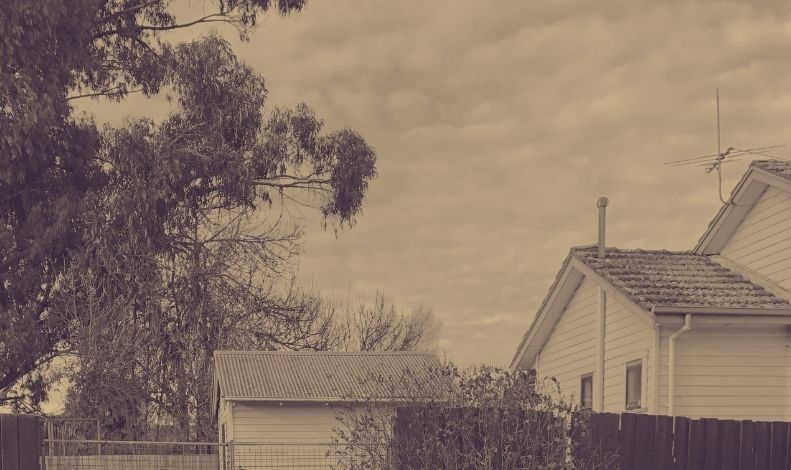
paul’s search for his Mum was resolved quickly, but what he saw that night as a six year old, has lasted the test of time.
In the autumn of 1981, we needed to leave George Town for a while and stay with Mum’s side of the family.
First, we stayed with one of Mum’s brothers in Warring Street, Ravenswood. After that, we spent a longer time with Nan and Pop at Pine Avenue, Newstead. My maternal grandfather, nicknamed Bumpy, had lost half of his right index finger in an industrial accident. The bump at the end fascinated us kids — he’d pretend he’d lost the tip that very day and enlist us grandchildren to hunt high and low around the lounge room to find it.
Bumpy was a pipe smoker and died of complications from emphysema less than a year after we stayed there. On the night he died, Mum and Dad were at an engagement party for a family friend. Mum had been torn about going — her father was in hospital — and I believe she’s always regretted not following her heart and being with him in his final moments.
Nan outlived Pop by 19 years and made full use of her twilight decades. She was rarely home to babysit — instead, she was a regular at the racetrack and, at one point, had two male companions with the same name to avoid any confusion when choosing company for a day out.
Mum grew up in that modest Housing Commission house in Newstead with seven brothers and two sisters. Twelve people packed into a three-bedroom home — though they got some relief when the State built an extra room out the back (see picture above). Its weatherboard walls and gabled roof matched the main house, but it was never connected. There was only ever one bathroom and one toilet for everyone at Pine Avenue.
That “sleep out,” five metres from the back door, became our home for a while. Mum, my brother, and I shared the small space. I went to East Launceston Primary for a time as a Grade 1 student.
At night, Mum would tuck us in — my brother and I shared a bed — and place a hot water bottle at our feet. She’d tell us to huddle back-to-back to keep warm. Once we were settled, she’d slip back into the main house. I can’t remember ever hearing her return, but every morning she’d be there when I woke. Each dawn, I’d lie in bed listening to the trains at Hobblers Bridge, just 250 metres away.
One cold night in early winter, I woke unsettled and called for Mum. When she didn’t answer, panic set in. I searched our small room but she wasn’t there. The door was deadlocked, so I squeezed my six-year-old body through the narrow window, dropped barefoot to the ground, and scampered to the main house. I crept through the kitchen and into the living room — and there she was, on the couch with Bumpy, the television murmuring in the background.
Mum, just 31 years old, sat propped against Pop’s shoulder, his four-and-a-half-fingered hand cupping hers. I ran to her, overjoyed I’d found her. She gathered me in her arms and we cuddled. I don’t remember what happened after that — but the image of Mum and Bumpy on the couch that night has never left me.
Now, with children of my own, I often think about that moment when I comfort my daughter. When we sit together watching TV, I hold her hand — it’s my quiet way of saying I see you. I am here. It’s love, spoken without words.
Postscript:
Nan and Pop paid rent on that public housing property every fortnight for more than fifty years. By my reckoning:
$150 per fortnight × 26 fortnights × 52 years = $202,800. Noting it was standard practice to buy a three bedroom house in Launceston for under $80,000 up until the early 2000’s. First home buyers were purchasing three bedroom properties in 2002 under $70,000.
It’s fair to say they paid for that house several times over — yet they never had the chance to buy it and build something to pass on. When Nan died in 2000, the house went straight back to the State.
They paid for that house several times over — yet when Nan died in 2000, it went straight back to the State. No title, no asset, no equity, no inheritance to pass on to a dozen children and grandchildren who could have used that foothold to build some security of their own.
That’s the quiet injustice buried in a good intention — decent housing for working people, yes, but never the chance to own it, never the means to build intergenerational wealth. My family’s story is just one among thousands in this state — families who paid the mortgage many times over but were never allowed to hold the deed.
This is why housing policy is never just about shelter — it’s about fairness, equity, and the right to build a future that doesn’t die with the last rent cheque.





